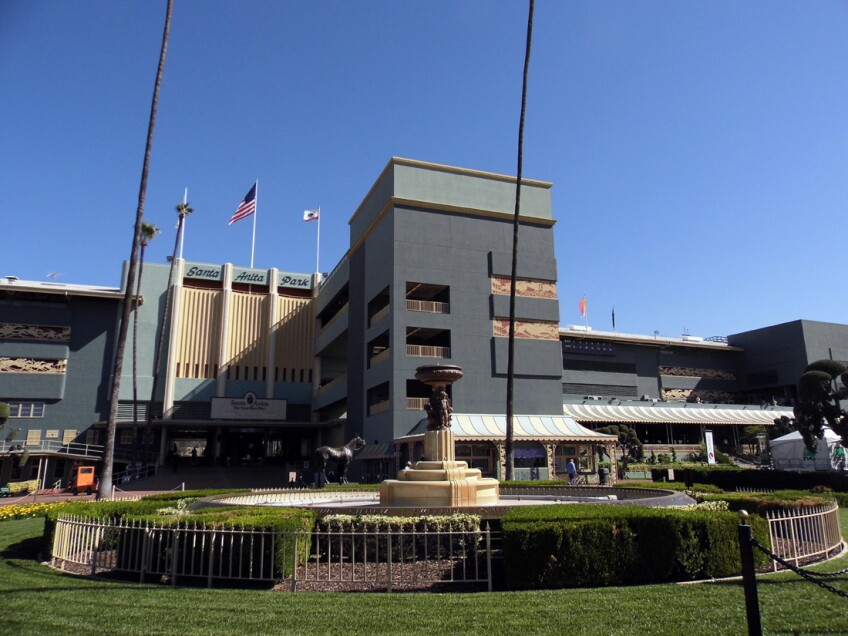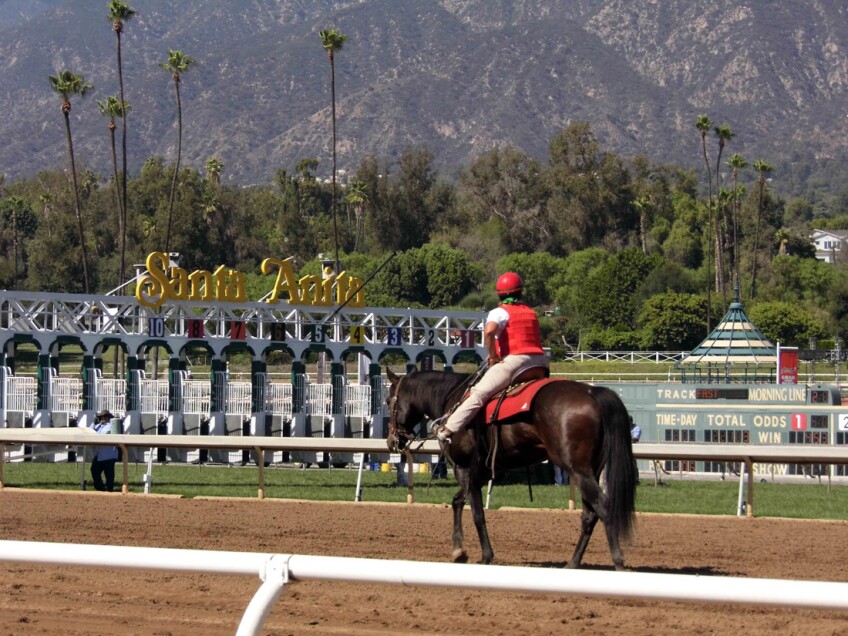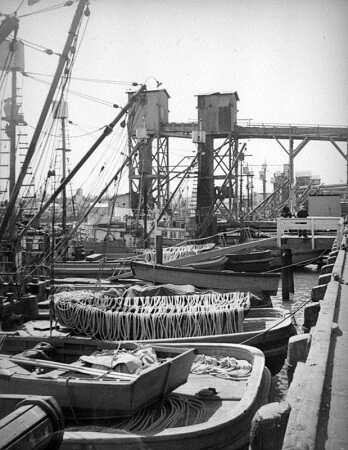Where to Explore Japanese-American History and Culture in Los Angeles


Be they fisherman, photographers, gardeners, farmers or builders — in Little Tokyo, Long Beach, the Crenshaw district, Gardena, Palos Verdes or Boyle Heights — people of Japanese origin and ancestry have made tremendous contributions to the architectural, agricultural, horticultural and commercial landscapes of L.A.
But 75 years after President Franklin D. Roosevelt signed Executive Order 9066 to federally mandate the relocation of all Japanese persons to concentration camps, it can be easy to forget what life was like back in 1942.
It can also be easy to ignore what happened back then.
Those were the days of racial covenants in Los Angeles — which began way before the war relocation effort and continued way after it ended — so the Japanese, as did other races and ethnic groups, largely stuck together and created tight-knit communities of temples, schools, restaurants, markets and even burial grounds.
But where they chose to live and work wasn’t always where they actually ended up.
It didn’t matter if they’d been born in Japan or born in the U.S. to Japanese parents, they weren’t yet allowed to become U.S. citizens and they couldn’t own land. And so, considering them a threat to national security, the U.S. government forcibly removed all of them — the mothers, the fathers and all of their children.
Fortunately (and surprisingly), some of them eventually came back to the City of Angels, despite the demons that had driven them out.
So, here are the five best places to discover how the Japanese influenced the L.A. metro area — from the homes and businesses that they had to leave behind to the barracks where they had to hang their hats.
1. Manzanar National Historic Site, Inyo County
In the wake of the anti-Japanese sentiment that prevailed on our shores after the bombing of Pearl Harbor, over 10,000 Japanese immigrants and Japanese-Americans were given little notice to pack up their families — and whatever they could carry — and “relocate” to the middle of the desert, 200 miles and four hours north of Los Angeles. When they entered the site at Manzanar, they were greeted by military police — specifically, a sentry who guarded the camp to control who came in and to make sure nobody got out. Sure, it had all the makings of a real town, like its own fire station, but these so-called "evacuees" left their homes and businesses behind to come live in military-grade barracks, surrounded by barbed wire. Perhaps the most recognizable part of what remains at the Manzanar site is the cemetery. The obelisk at the center has an inscription that loosely translates to mean "Soul Consoling Tower." People visit and leave trinkets, toys and other mementos — perhaps to console themselves, and perhaps to console the souls that were lost. Garlands of paper cranes have also been left as offerings on both the cemetery boundary fence posts and individual graves. The restored former auditorium — once used for public assemblies like high school graduation, memorial services and dances, and now serving as the historic site's visitors' center — is one of the few original buildings still standing. Mostly, the 814 acres of Manzanar today are those of a ghost town. If you walk through or take the "auto tour," you've got to imagine what life must've been like there — in the orchards and gardens they planted and the ponds and playgrounds they built. You can see where the incarcerates once ate, slept and prayed; where the children went to school and played baseball; where the sick went to see the doctor; and where women crocheted camouflage nets for the war effort. And if there's any question as to whether or not they were, in fact, incarcerated at Manzanar, just look at the tower that once housed armed guards (now a rebuilt replica standing in place of the original). The Manzanar site is open from dawn to dusk every day of the year. The Manzanar Committee also sponsors an annual pilgrimage to Manzanar on the last Saturday of April.


2. Santa Anita Park, Arcadia
Most recently, Santa Anita was the home track for the Triple Crown winner, American Pharoah — but it’s seen its share of other celebrities. Cary Grant, Al Jolson and Lana Turner all invested in Santa Anita Park, and investor Bing Crosby also owned a horse that raced there. But the history of California's first thoroughbred racetrack isn't entirely glamorous. In 1942, racing was suspended at Santa Anita, and its facilities — including its horse stables — were used as a Japanese internment camp for as many as 20,000 Japanese-Americans (including a young George Takei). It’s the only such camp during the war relocation effort to have experienced a “disturbance of serious proportions” between the inmates and the keepers. That riot was the only time the Army had to declare martial law in any of the “assembly centers,” so called because the inmates were temporarily held until other camps could be built in Arkansas, Colorado, Wyoming, etc. where they could be transferred for a more long-term solution. (There were other temporary assembly centers, too: one located 20 miles east in Pomona, more or less where the Fairplex parking lot is now, and another in Tuna Canyon, at the site of the recently-closed Verdugo Hills Golf Course.) After the transfers were complete, the racetrack was converted into a troop training center and then a POW camp for captured German soldiers. Racing finally resumed in 1945, and has been more or less continuous since. Visit today and you’ll see its Colonial Revival architectural style mixed with elements of Moderne as designed by architect Gordon B. Kaufmann (of Hoover Dam fame) — including the historic grandstand and clubhouse buildings (and even some of their subsequent additions) — although the original structures have been significantly altered since 1934. There’s very little trace of the track’s dark history during World War II, except for one memorial plaque near the entrance. If you happen to overlook it, it would be easy to miss the significance of Santa Anita Park being the home for the Tokyo City Cup and Japan Family Day, an annual event – also in April.



3. White Point and Furusato fishing villages, San Pedro
In the late 1890s, a Japanese fishing village thrived at the shores of San Pedro, harvesting an abundance of abalone (the fish canned or dried as food and the shell used for decoration) until the supply depleted in the early 1900s. Subsequently, two Japanese brothers Tojuro and Tamiji Tagami arrived in 1910 and discovered natural geothermal sulfur hot springs (known as onsen 温泉), which they dug out to create the White Point Hot Spring Hotel (a.k.a. the White Point Health Resort), a two-story hotel and restaurant which also included a bathhouse, enclosed saltwater swimming, boating and fishing. In the 1920s and 30s, it became popular with Japanese-Americans — particularly newlyweds, patients seeking its healing waters and even the 1932 Japanese Olympic team. Since the resort was one of the few recreational facilities that the Japanese were allowed to use, it thrived despite anti-Japanese sentiment in the early 20th century. But it couldn’t survive the force of nature — with storms battering the coast in 1928, and the Long Beach earthquake crumbling the structures and blocking the flow of the hot springs in 1933. Combined with the Great Depression, the resort finally closed in the late 1930s. The U.S. military took over the beach with the onset of World War II — and, for years, the fountain from the resort's spa lay in ruins down on the beach. It’s since been brought up the bluff, restored and reinstalled at the entrance of the White Point-Royal Palms Beach Park — and it’s the most visible remnant of the White Point resort. As you walk along the beach below, you can also spot the remains of the concrete walls of the old beach resort. The perfect place for the fishermen to relocate after the White Point abalone camp fizzled out was nearby Rattlesnake Island — later renamed Terminal Island. With expertise from their homeland, the Japanese were masters at catching tuna and taught their American counterparts how to fish more efficiently for a commercial operation. At one point, there were nearly 3,000 Japanese and Japanese-American residents of Furusato (“home sweet home”). They were the first Japanese Americans to be sent to detention centers during World War II, and they were given only 48 hours to pack up as much as they could and sell off the rest. When they returned to their hometown, they discovered the Navy had razed it, leaving no trace. The Japanese Fisherman's Memorial on Terminal Island pays tribute to those immigrant and second-generation pioneers and their families.


4. Little Tokyo, Downtown L.A.
Unlike the recently designated Sawtelle Japantown (a.k.a. “Little Osaka”) in West L.A., Little Tokyo actually dates back to 1884. In 1897, a group of Japanese transplants collected themselves into the “Japanese Association of Los Angeles,” a kind of chamber of commerce that evolved into the modern-day Business Improvement District — where you’ll find the Japanese American National Museum (whose “Instructions to All Persons: Reflections on Executive Order 9066” exhibition runs through August 13, 2017), the Japanese American Cultural & Community Center (and its James Irvine Japanese Garden), and the first Sōtō Zen Buddhist temple in North America. There are only three such Japantowns that remain in the U.S. – the other two located in San Francisco and San Jose – and, considering the ghost town it became after its residents and business owners were forcibly removed in 1942, that’s pretty amazing. As early as 1949, the celebration of second-generation Japanese-Angelenos known as Nisei Week resumed after the war, and its annual celebrations have been running continuously ever since. (Particularly popular is the Gyoza Eating Championship.) Today, the thriving businesses in the area range from tearooms and ramen houses to bakeries, sushi, bars, izakaya and markets — as well as Starbucks, Subway, Pinkberry and Angel City Brewery. Among the lost businesses is the photography studio of Tōyō Miyatake, who infamously and heroically smuggled a camera into Manzanar and documented life in the detention center as no outsider (not even Ansel Adams) could. A public art sculpture commemorating his camera is located on N. Central Avenue near the Oomo Cube, and you’ll find a city block named after Miyatake that runs between S. Los Angeles Street and S. San Pedro Street and between E. 2nd and 3rd Streets. While you’re there, pop into the Doubletree Hotel on S. Los Angeles Street and take the elevator up to the roof for a quick stroll through its rooftop Japanese garden.


5. Evergreen Cemetery, Boyle Heights
Established in 1877, Evergreen Memorial Park & Crematory is the oldest nondenominational cemetery in Los Angeles. It started out as a potter's field, a mass grave for those too poor to buy their own plot of land (or headstone) as their final resting place. Fifty years after its founding, Evergreen was full, so its operators began cremating the poor to conserve space. And nearly 50 years after that, its new private owners (having purchased it from the county) readied the plot of land for more burials by adding eight feet of soil on top of the existing unmarked graves, and burying the cremated remains of thousands of unclaimed dead. The nearly 70 acres of graves are visibly segregated by ethnicity, with a separate section for Japanese burials — including a memorial dedicated in 1949 for the 442nd Infantry Regimental Combat Unit of Japanese soldiers. As well, the Garden of Pines was created in 1966, to honor the first generation Japanese (a.k.a. Issei) pioneers — including Tōyō Miyatake, who passed in 1979. But Evergreen Cemetery isn’t just a place where Japanese Angelenos were laid to rest — it’s a reminder of the thriving community of Japanese that once populated Boyle Heights, just a stone’s throw across the First Street Bridge from Little Tokyo. And every year during Obon festivities — the so-called “Japanese Day of the Dead” festival — families make their pilgrimage to Evergreen to honor their ancestors of Japanese origin and descent. And the cemetery continues to be a popular burial place with the Japanese community today.








